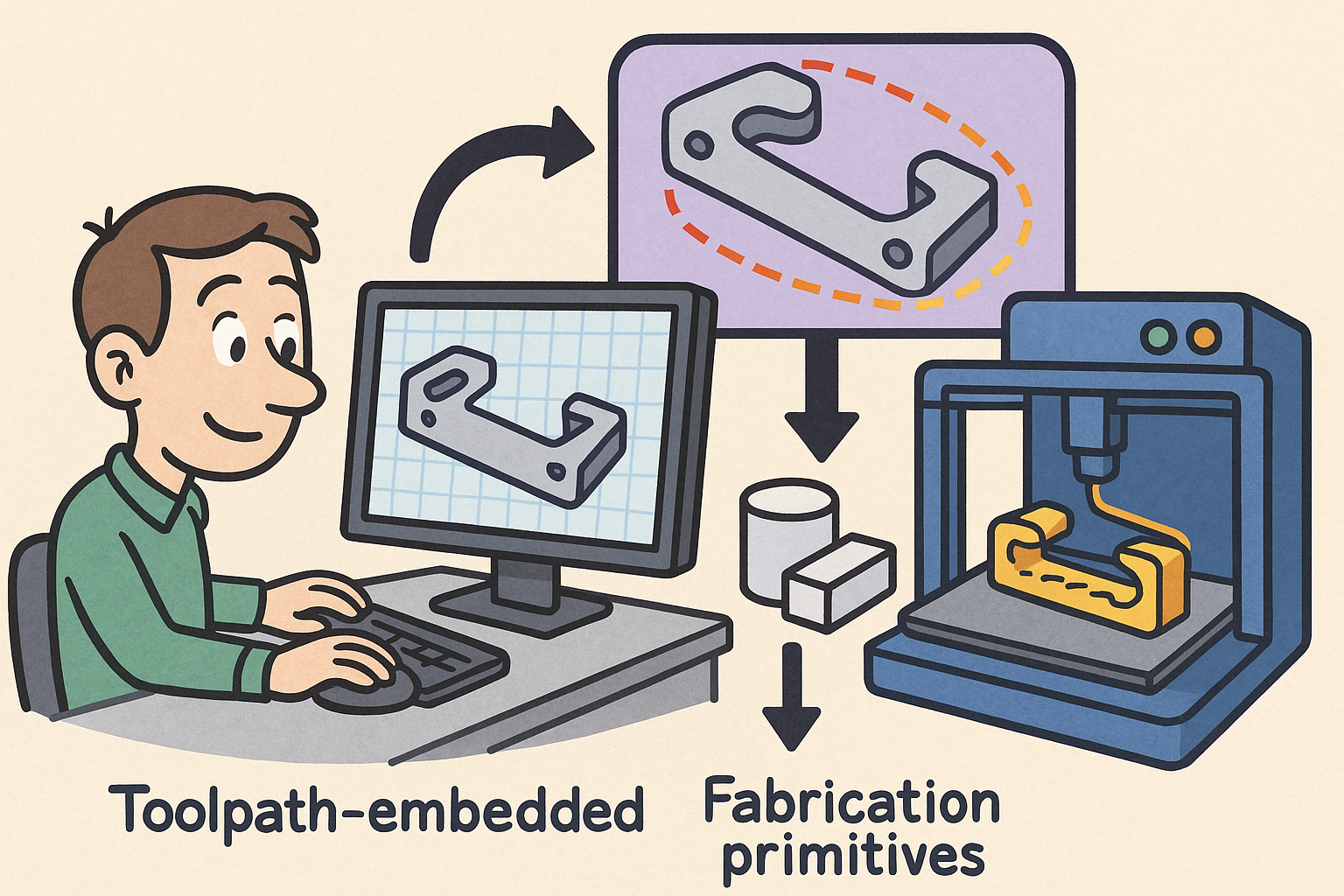Your Cart is Empty
Customer Testimonials
-
"Great customer service. The folks at Novedge were super helpful in navigating a somewhat complicated order including software upgrades and serial numbers in various stages of inactivity. They were friendly and helpful throughout the process.."
Ruben Ruckmark
"Quick & very helpful. We have been using Novedge for years and are very happy with their quick service when we need to make a purchase and excellent support resolving any issues."
Will Woodson
"Scott is the best. He reminds me about subscriptions dates, guides me in the correct direction for updates. He always responds promptly to me. He is literally the reason I continue to work with Novedge and will do so in the future."
Edward Mchugh
"Calvin Lok is “the man”. After my purchase of Sketchup 2021, he called me and provided step-by-step instructions to ease me through difficulties I was having with the setup of my new software."
Mike Borzage
Design Software History: The Evolution of Computational Fluid Dynamics: From Early Pioneers to Modern Innovations in Engineering Design Software
February 01, 2025 9 min read


Definition and Fundamental Concepts
Computational Fluid Dynamics (CFD) is a specialized field within fluid mechanics that uses numerical analysis and computational algorithms to solve and analyze problems involving fluid flows. By leveraging the power of computers, CFD enables the simulation of fluid motion and heat transfer in complex systems, which is essential for predicting the behavior of liquids and gases in various engineering applications. At its core, CFD involves the discretization of the governing equations of fluid dynamics—most notably the Navier-Stokes equations—into solvable numerical forms. These equations describe the fundamental principles of conservation of mass, momentum, and energy within fluid systems.
The role of CFD in simulating fluid flow and heat transfer is pivotal for modern engineering design processes. It allows engineers to virtually test and optimize designs by providing detailed insights into flow patterns, pressure distributions, temperature gradients, and other critical parameters without the need for physical prototypes. This virtual experimentation significantly reduces development costs and timescales. Moreover, CFD is instrumental in addressing complex phenomena such as turbulence, multiphase flows, and chemical reactions, which are challenging to analyze through analytical methods alone. The importance of CFD lies in its ability to improve product performance, ensure safety, and drive innovation across a multitude of industries ranging from aerospace and automotive to energy and environmental engineering.
Historical Context and Emerging Need
In the mid-20th century, rapid industrial advancements and the growing complexity of engineering systems highlighted the limitations of traditional experimental and analytical methods in fluid flow analysis. Industries such as aerospace and automotive engineering were pushing the boundaries of design, necessitating more precise and efficient ways to predict aerodynamic performance and thermal behavior. The emerging need for better fluid flow analysis was driven by factors like the pursuit of higher speeds, improved fuel efficiency, and enhanced safety standards. This period saw the advent of jet engines and supersonic aircraft, where understanding complex flow phenomena became critical.
However, early computing challenges posed significant limitations in simulating complex fluid dynamics. Computers of that era had limited processing power and memory, restricting the size and complexity of solvable problems. Numerical methods were in their infancy, and the algorithms required to solve the Navier-Stokes equations were not fully developed or were computationally intensive. Additionally, the lack of user-friendly software interfaces made it difficult for engineers who were not programming specialists to utilize computational tools effectively. Despite these challenges, the foundational work during this period set the stage for future developments in CFD. The intersection of advancing computer technology and growing industrial demands created a fertile ground for innovation in computational methods for fluid dynamics.
Early Developments and Pioneers
The evolution of CFD owes much to the groundbreaking work of early pioneers who laid the foundations of numerical analysis applied to fluid dynamics. One such luminary was John von Neumann, a mathematician and physicist whose contributions to numerical methods and computer science were instrumental. In the 1940s, von Neumann recognized the potential of using digital computers to solve complex partial differential equations numerically. His work on stability analysis of numerical schemes provided critical insights into ensuring accurate and convergent solutions in computational simulations.
The initial transition from analytical models to computational simulations marked a significant shift in engineering practices. Analytical solutions to the Navier-Stokes equations were limited to simple cases with high symmetry and simplifying assumptions. As engineers faced problems with increasing complexity, the need for numerical methods became apparent. Early attempts involved finite difference methods applied to linearized forms of the equations. Researchers began developing algorithms that could handle more realistic, non-linear problems. This period also saw the emergence of specialized computational techniques for specific applications, such as potential flow solvers for aerodynamics. The efforts of early pioneers established the credibility of computational approaches and opened new avenues for research and application in fluid dynamics.
Advancements in Software and Algorithms
The advancement of CFD was significantly propelled by the development of foundational algorithms such as the finite difference, finite volume, and finite element methods. These numerical methods provided the mathematical framework for discretizing and solving the governing equations of fluid flow on computational grids. The finite difference method, one of the earliest techniques, approximates derivatives by differences using grid points, which is straightforward but limited in handling complex geometries. The finite volume method improved upon this by integrating the conservation equations over control volumes, making it well-suited for conserving fluxes across cell boundaries and handling irregular meshes.
The finite element method introduced flexibility in modeling complex geometries by using elements of various shapes and sizes, which was particularly advantageous in structural mechanics and later adapted for fluid dynamics. These algorithms were further enhanced by developments in turbulence modeling, such as the k-epsilon and Large Eddy Simulation (LES) models, enabling more accurate simulations of turbulent flows. Key organizations like NASA played a vital role in advancing CFD software, developing programs like the NASCENT and OVERFLOW codes. Companies such as ANSYS and Siemens contributed to the commercialization of CFD software, making sophisticated simulation tools accessible to a broader range of industries. ANSYS Fluent and Siemens STAR-CCM+ are examples of comprehensive CFD packages that incorporate advanced models and user-friendly interfaces, allowing engineers to perform complex simulations efficiently.
Integration with CAD Tools
The historical milestones in integrating CFD capabilities with Computer-Aided Design (CAD) platforms marked a significant step in streamlining the design and analysis process. Initially, CFD and CAD existed as separate entities, requiring manual data exchange that was time-consuming and prone to errors. The advent of integrated software solutions allowed for seamless transfer of geometric data from CAD models directly into CFD simulations. Early software like Pro/ENGINEER (now PTC Creo) began offering integrated modules that combined design and analysis tools within a single environment.
Examples of such integrated solutions include the development of Autodesk's CFD software, which works in conjunction with their CAD platforms to provide a unified workflow. This integration enhances design validation and optimization by allowing engineers to iterate designs rapidly based on simulation results. Designers can modify geometry in the CAD model and immediately assess the impact on fluid flow and thermal behavior without the need for data re-importation or re-meshing. The integration also facilitates multidisciplinary collaboration, as teams can work within a common platform, improving efficiency and reducing the potential for miscommunication. The ability to perform CFD analysis early in the design process has become a critical factor in developing high-performance, optimized products across various industries.
Aerospace and Automotive Engineering
The influence of CFD on aerospace and automotive engineering has been profound, transforming the way aerodynamic and thermal evaluations are conducted. In aerospace engineering, CFD has become an indispensable tool for designing aircraft, spacecraft, and their components. It enables engineers to simulate airflow over wings, fuselage, and propulsion systems to optimize lift, reduce drag, and enhance overall performance. The ability to model complex phenomena such as shock waves, boundary layer interactions, and turbulence has led to advancements in supersonic and hypersonic flight technologies. In the automotive industry, CFD is extensively used to improve vehicle aerodynamics, contributing to fuel efficiency and stability. Simulations help in reducing aerodynamic drag, optimizing cooling systems, and ensuring passenger comfort through climate control analysis.
Notable projects where CFD was instrumental include the development of high-speed trains and performance sports cars, where precise aerodynamic shaping is critical. While we are not focusing on specific case studies, it is essential to recognize that leading companies like Boeing, Airbus, Ford, and BMW have heavily invested in CFD technologies to maintain competitive advantages. CFD allows these companies to explore a wide range of design alternatives virtually, reducing the need for expensive wind tunnel testing. By predicting the aerodynamic performance and thermal characteristics accurately, engineers can make informed decisions that lead to safer, more efficient, and innovative designs.
Energy and Process Engineering
In the fields of energy and process engineering, CFD plays a crucial role in optimizing equipment and processes involved in energy production and chemical processing. For energy systems, CFD is used to enhance the design of turbines, boilers, heat exchangers, and combustion chambers. By simulating fluid flow and heat transfer, engineers can improve efficiency, increase output, and extend the lifespan of equipment. In the context of renewable energy, CFD contributes to the optimization of wind turbines and solar collectors by analyzing airflow patterns and thermal properties. In process engineering, CFD aids in the design of reactors, separators, and mixers by providing insights into fluid dynamics within complex geometries.
The impact of CFD in enhancing efficiency and reducing environmental impact is significant. By optimizing combustion processes, for example, CFD helps in reducing emissions of pollutants such as NOx and CO2. Engineers can model the mixing of reactants, flame propagation, and heat release to develop cleaner and more efficient combustion systems. CFD also enables the simulation of pollutant dispersion in the environment, assisting in the development of strategies to mitigate adverse effects. Companies like Shell and ExxonMobil utilize CFD to improve process efficiency and comply with environmental regulations. The ability to predict and control fluid behavior in these industries leads to safer operations, cost savings, and a reduced ecological footprint.
Emerging Applications and Modern Innovations
The use of CFD has expanded into novel applications such as biomedical engineering and environmental modeling, driven by advancements in computational power and simulation techniques. In biomedical engineering, CFD is utilized to simulate blood flow in arteries, air flow in respiratory systems, and drug delivery mechanisms. These simulations aid in the design of medical devices like stents, inhalers, and artificial heart valves, improving patient outcomes and advancing personalized medicine. Environmental modeling benefits from CFD through the simulation of airflow in urban environments, prediction of pollutant dispersion, and analysis of natural phenomena like weather patterns and ocean currents.
The impact of enhanced computational power and cloud computing on CFD capabilities is profound. High-Performance Computing (HPC) allows for the simulation of large-scale, highly detailed models that were previously unattainable. Cloud-based CFD solutions provide scalable resources, enabling small and medium-sized enterprises to access powerful computational tools without significant upfront investment in hardware. This democratization of CFD technology accelerates innovation across industries. Additionally, modern innovations include the development of user-friendly interfaces and automated meshing techniques, reducing the learning curve for new users and increasing productivity. The integration of CFD with other simulation tools, such as structural analysis and electromagnetics, facilitates a more comprehensive approach to product development.
Technological Innovations and Emerging Trends
The future of CFD is being shaped by technological innovations and emerging trends, notably the exploration of Artificial Intelligence (AI) and machine learning in enhancing simulations. AI algorithms can assist in accelerating CFD simulations by predicting flow fields based on trained models, reducing computational time while maintaining accuracy. Machine learning techniques are being employed to develop surrogate models that approximate CFD results, enabling rapid evaluations during the preliminary design stages. These advancements allow engineers to explore a broader design space more efficiently.
Another significant trend is the move towards real-time CFD simulation, facilitated by increased computational resources and optimized algorithms. Real-time simulations allow for immediate feedback during the design process, which is crucial for rapid prototyping and iterative development. This capability has profound implications for industries where time-to-market is critical. Engineers can interactively modify designs and instantly observe the effects on fluid flow and thermal behavior, leading to more innovative and optimized products. The integration of real-time CFD with virtual reality (VR) and augmented reality (AR) technologies further enhances the design experience by providing immersive visualization of simulation results.
Challenges and Opportunities
Despite the significant advancements, there are ongoing computational and modeling challenges in CFD. Accurately simulating turbulent flows, multiphase interactions, and reactive flows remains computationally intensive and complex. High-fidelity simulations require substantial computational resources and time, which can be a barrier for some organizations. There is also the challenge of ensuring the accuracy and reliability of simulations, as numerical errors and model assumptions can lead to incorrect conclusions. Additionally, the complexity of setting up simulations and interpreting results necessitates specialized expertise.
However, these challenges present opportunities for further integration of CFD with other design and engineering technologies. Advances in computational hardware, such as quantum computing and graphics processing units (GPUs), offer the potential to overcome computational limitations. Developing more robust and user-friendly software tools can lower the barrier to entry for non-specialists. There is also an opportunity to enhance multidisciplinary optimization by integrating CFD with structural analysis, materials science, and control systems. This holistic approach can lead to the development of smarter and more efficient products. Collaboration between academia, industry, and software developers is essential to drive innovation and address the challenges facing CFD.
Conclusion
In summary, Computational Fluid Dynamics has had a transformative impact on the design and engineering landscape. From its early beginnings with pioneers like John von Neumann to its widespread application across industries today, CFD has revolutionized the way engineers simulate and understand fluid behavior. The continuous evolution of CFD tools has enabled the tackling of complex design challenges, improving product performance, and fostering innovation. As technology advances, CFD will continue to play a critical role in addressing the demands of modern engineering, driving efficiencies, and supporting the development of solutions to some of the world's most pressing challenges.
Reflection on the progress made in CFD underscores the importance of ongoing research and development. The integration of AI, real-time simulation capabilities, and enhanced computational power promises to further expand the possibilities of CFD. As industries seek to design products that are more efficient, sustainable, and responsive to evolving needs, CFD stands as a vital tool in achieving these goals. The future holds immense potential for CFD to contribute to breakthroughs in engineering and technology, solidifying its position as an indispensable component of the design process.
Also in Design News

Rhino 3D Tip: Validate Curvature and Surface Fairness in Rhino
December 15, 2025 2 min read
Read More
Design Software History: UV Mapping and Texture Pipelines: From Parameter Spaces to Product Visualization
December 15, 2025 11 min read
Read More
Path-First Modeling: Embedding Toolpath-Aware Constraints and Fabrication Primitives into CAD Kernels
December 15, 2025 13 min read
Read MoreSubscribe
Sign up to get the latest on sales, new releases and more …


